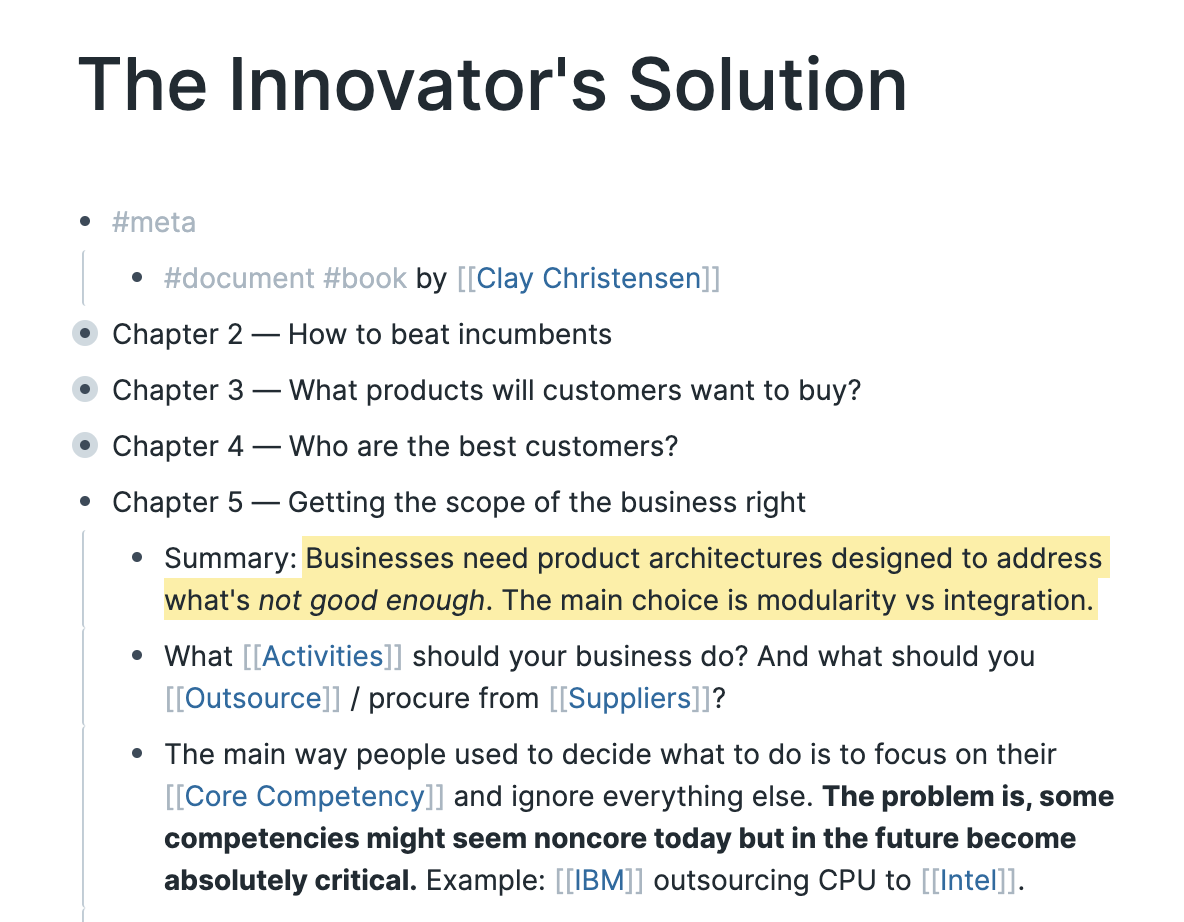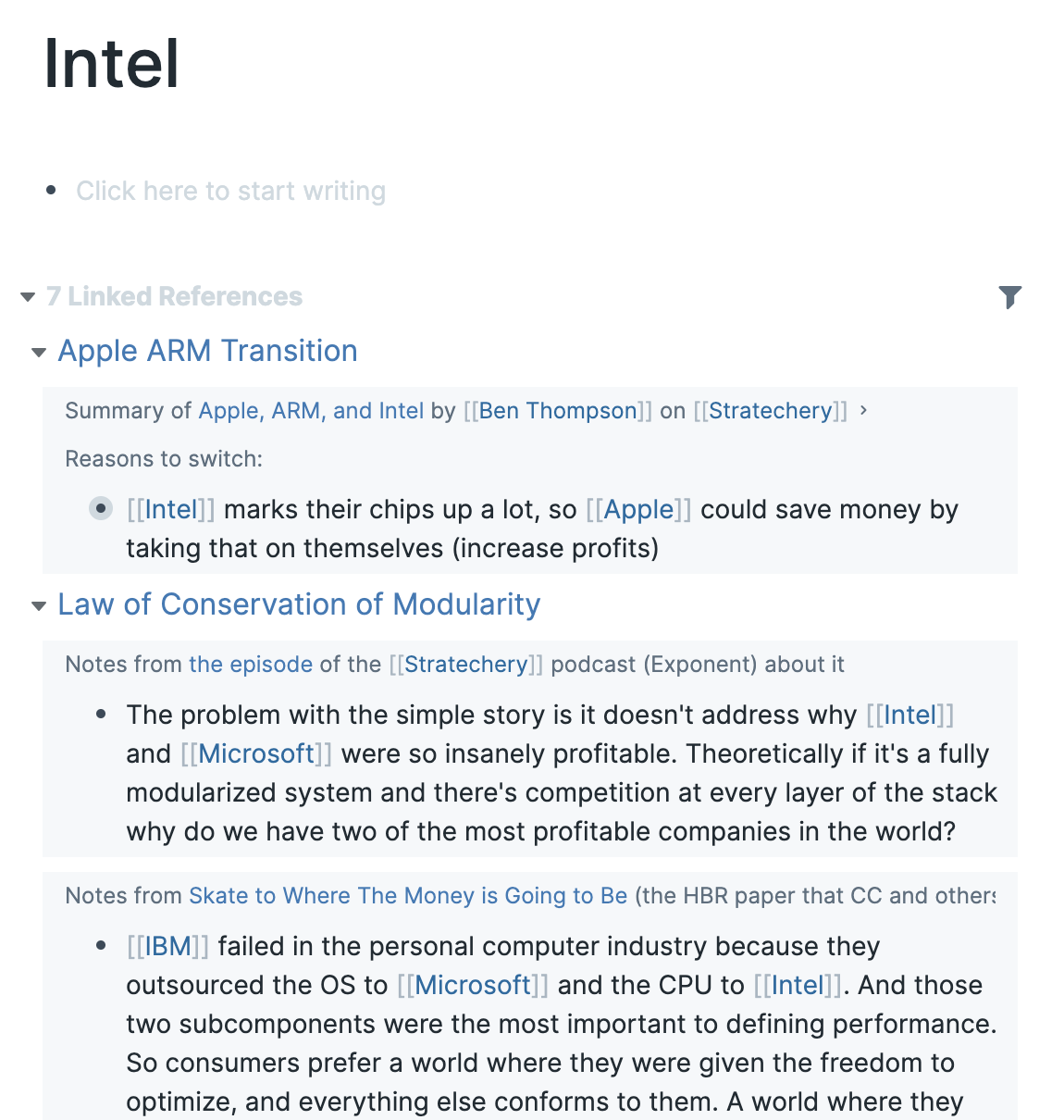
1
It’s happened again.
VCs have invested in a startup at a price that’s got half of tech twitter all like:
Of course, the company in question is Roam, the valuation is $200m (a 200x multiple of their most recent publicly shared ARR of $1m!), and the VCs include industry veterans such as the Collison brothers, Kevin Rose, Tim Ferris, Brianne Kimmel, Nikhil Basu-Trivedi, and many more smart folks.
Regardless of whether you think this is a smart or foolish investment, I think we can all take a step back and admire the sheer improbability of this event. I mean, just imagine toiling for years in obscurity, living in a van, getting rejected by Y Combinator five times, building a note-taking app that’s supposed to “fit everyone’s brains better” but being told over and over again that people don’t understand it, that it’s too complicated, then — seemingly in an instant — getting noticed by a small set of folks who love it, then a slightly larger group, then becoming a cult on Twitter, raising a proper seed round, launching paid plans, hitting $1m ARR within weeks, and, finally, raising a monster round from a who’s-who of Silicon Valley investors at an astronomical valuation.
Pretty good!
The bad news is: that’s all in the past now.
What happens next is what matters.
Can Roam justify the hype?
2
Roam is a weird blend of the best and the worst software businesses in the world.
The worst software businesses, conventional wisdom says, are todo lists. There’s almost zero barrier to entry to creating a new todo list business, so the market price is pretty close to $0. Yes, some companies have created quality todo list apps that are nice businesses, but they are not $200m businesses. This is because anyone with programming and design skills can build a todo list app, and if you prefer the design there’s not much keeping you tied to your current app. Personal todo lists don’t depend on others using the same system (no network effects) and it doesn’t matter to most people if your old todos aren’t there (low switching costs). It’s a tough business.
The best software businesses are networks. When every new user that joins makes the network more valuable for the other users, it leads to a sort of accelerating value and growth that is one of the most powerful forces in the world. Nobody can copy the value you provide, because the value isn’t derived from your functionality, it comes from your user base.
Right now, Roam is like a todo list, but they’re in the process of becoming more like a network. How successfully they pull this off will define their future.
They have some genuine innovations on note-taking (which I’ll explore in section 4 below), but these innovations are quickly being copied. Perhaps they can keep shipping innovative functionality for several years. But eventually they’re bound to run out of ideas, and the market will catch up. At that point it will be incredibly challenging to charge $15 a month.
If they hadn’t raised at a $200m valuation that wouldn’t be the end of the world. But now, the indie hacker path is out of the question.
So, the race for Roam to become more like a network — and less like a todo list — is on.
3
Network effects are not the kind of thing you can usually just tack onto an existing product. When they’re strong enough to matter, they’re usually there from the very beginning, built into the core reason why people use the product in the first place.
Take Slack, for example. The entire point is to talk to your co-workers. There is no single-player mode. So in order to get any value from the product, other people need to also be using the product. This is as pure as a network effect gets.
The only problem with this is that it can be incredibly hard to get these businesses started. There’s a sort of collective action problem — they’re only useful if a bunch of people start using them at the same time. So one way people have overcome it in the past is to adopt a sort of “come for the tool, stay for the network” strategy.
Instagram is the canonical example. I downloaded it the day it launched and took this photo, not because I thought anyone on Instagram would see it, but because I wanted to use their filters and post it on Twitter. Eventually I found people to follow, and people followed me, and now the filters hardly matter.
As Chris Dixon put it, “The idea is to initially attract users with a single-player tool and then, over time, get them to participate in a network. The tool helps get to initial critical mass. The network creates the long term value for users, and defensibility for the company.”
So, how can Roam do this? What’s their tool, why do people like it, and how can they parlay that into a network?
4
The reason people love Roam is because it increases the expected value of their notes. Let me explain.
In most note-taking apps, you jot something down quickly and only use it a few times before losing track of it. So you only take notes when you have something specific you want to capture, like a shopping list or a few important bits of information for a project at work.
Roam encourages a different kind of behavior. It’s more like growing your own personal wikipedia over time. Every time you take a note, you can tag entities like people, companies, books, or ideas using double brackets [[Like This]].
For example, here’s a screenshot of my notes for The Innovator’s Solution:
Those blue links lead to other pages in my Roam where I capture information about them. But the coolest part is those pages also know about the pages that link to it. The links are “bidirectional” — meaning when you look at a page, it will tell you all the pages that link to it. So it’s easy to have a sort of central gathering point for all your notes about a certain topic.
For example, here’s my page on Intel, which I haven’t written anything in yet, but automatically gathers all the notes I’ve ever taken about the company:
Now, I’m much more likely to take diligent notes when I’m reading, because I fully expect I’ll be able to find them again the next time I’m thinking about a topic. If I were going to write a post about Intel, my first step would be to look at my Intel page in Roam and find all my previous thoughts. This is what I mean when I say Roam “increases the expected value of my notes.” Now that I’m using Roam, I’m confident my notes will remain useful long into the future, so I’ve increased the quality and quantity of the notes I take.
And this is just the surface of Roam’s functionality. The more you use it, the more it feels like a programmable environment like Excel, rather than a regular note-taking app. For example, say you want to reference something you said somewhere else. Normally you’d just quote yourself or repeat yourself. But if you were looking at the original quotation, you couldn’t see the places that reference it. With Roam you can.
Here’s an example from my notes on 7 Powers:
See that little “1” on the bottom right? It’s not a footnote! That’s actually telling me that I referenced this idea in another note (see the line at the bottom with a light blue background):
The way it works under the hood is each bullet point has an ID number. You can copy and paste it and reference it anywhere, and it shows you the text. If you update the source text, then the references all update, too.
This should feel pretty familiar to programmers. Kind of like importing a module! “Reusability” is good practice in software architecture and in idea architecture, for much the same reasons: saves time, reduces errors, and encourages clarity.
And this is just one of several interesting features of Roam. Queries are particularly powerful. It’s beyond the scope of this post to go into too much more detail about everything that Roam can do, but if you’re interested I highly recommend this Superorganizers article.
You might be wondering: who really needs this stuff? It seems kinda intense. And it’s a good question. Roam isn’t for everyone, but I think it’s especially useful for situations such as writing, research, therapy, people management, or anytime you need to ingest a large amount of information, remember it, and come up with new ideas.
Of course, to get this value, it doesn’t really matter if anyone else you know is using Roam, so long as enough people in general are using it to keep it alive. Which is great, because you don’t need anyone else to sign up to get started on the product. But this means you could leave anytime, and nobody would notice. It’s been less than a year since Roam started to gain traction, Notion just added Roam’s signature bi-directional link functionality, and there are already open-source “Roam compatible” apps on the horizon, like Athens. One can only imagine what this would look like a few years down the line if Roam continues to grow and charge $15 a month.
Roam does currently have indirect network effects working in its favor. There’s a great community of people sharing techniques for using Roam effectively, and, at some level, their user base led to the funding round, which will lead to further product and growth, which will lead to further revenue and perhaps funding.
But these sorts of indirect network effects are nowhere near as powerful as the direct network effects that a product like Slack or Notion has. These businesses create a center of gravity between groups of people, which makes them incredibly sticky, and powers their exponential growth.
Not to mention a related but distinct fact: some groups of people are businesses, and they’re willing to pay far greater sums of money for productivity tools than consumers are. The TAM is just bigger.
So, there are two roads ahead for Roam.
The default trajectory leads towards intellectual nerds, purchasing on their own and using Roam privately. This is typical of Roam’s current usage patterns, but won’t satisfy Roam’s investors. The swerve leads towards organizational collaboration, network effects, and enterprise customers.
In other words, Roam could be the thing the scientist uses for fun to organize their book notes, or they could also be the thing that same scientist uses at work to collaborate with colleagues on discovering new truths, paid for by their employer.
To achieve that second direction, Roam will have to switch tracks.
5
Technically, you can use Roam with your team now. All you have to do is click the “share” button and type in some email addresses, the same way you’d add people to a Google Doc.
But this behavior is not yet common, as far as I can tell. You don’t hear about teams running on Roam yet the same way people use Notion, Asana, and Slack to organize their work. When people think of Roam, they think of personal use.
Turns out, building a network effect is much more complex than simply adding collaboration features!
So what can Roam do to get more groups of people using it? Paradoxically, I think the best thing they can do for now is make it a better single-player experience, while having shared databases working in the background the whole time.
Roam doesn’t have mobile apps or desktop apps. It’s difficult to learn to use. There are still a lot of rough edges in the experience. A few months ago, Roam had serious stability issues. These things are table stakes, and have to get solved before large groups of people will want to rely on it.
But there’s a trade-off here that requires careful navigation and timing: if Roam remains focused on improving the single-player experience for too long, they might miss their window when they can make it work for teams.
Gaining product-market fit with the team use case is going to be a fairly independent endeavor from gaining product-market fit with individuals. That’s not to say it can’t be done, but there are trade-offs involved. Some of the things that make Notion great for teams make it not as great for individuals. Some of the things that make Roam great for individuals makes it not as great for teams.
For instance, Notion has a sort of straightforward design that’s meant to be easy for anyone to use and learn. They prioritize making it obvious for newcomers, whereas Roam is more focused on power users who are willing to put quite a bit of effort into learning a new paradigm. This is powerful for those users, but, realistically, not many teams are going to be composed exclusively of people who fit that profile. So what can Roam do?
Also, the most fundamental trade-off is just prioritization of time and energy. Every minute you spend making a really great Kanban and database functionality in order to support agile development teams, or sales CRMs, or whatever, you’re spending less time implementing “version control with support for branching realities within ideas” that will win you points with your core users.
The core question for Roam is: what kind of teams will use it? Which tools does it replace, and which tools does it co-exist with?
It’s hard to see the path clearly.
6
On the other hand, maybe I’ve got Roam all wrong.
If you take a bong rip and close your eyes, you can imagine a world where Roam is a new sort of internet. Where people can publish ideas and reference each other’s ideas in deep, interlinked ways. It’d be like a giant public brain, instead of a private second brain.
That certainly would be a network effect.
The only problem is, I’ve seen a lot of “public Roams” but I never enjoy the reading experience. Non-linear “digital gardens” of notes are of immense usefulness, but only so long as the individual nodes provide quality linear reading experiences. And it’s not impossible to do so in Roam, but I’ve rarely seen it.
When it comes to publishing, I think the publishing platform of choice is determined by other questions, such as where are my ideas going to make the most impact, where can I make the most money, what banner can I publish under that will lend me the most credibility.
Plus, what would Roam’s financial position in this ecosystem of interlinked writing even be? Would they charge writers? Likely not, as this would undercut the core network effect and create potential energy for a free and/or open-source competitor. Would they create an ad network? Seems extremely dubious.
So I feel pretty certain that Roam’s road to justifying the $200m valuation leads directly to team collaboration and enterprise use. Which feels, to be honest, a little... depressing?
Like, I love the pure second-brain vision of Roam. I want all the weirdness! I want all their focus to be dedicated to fun things like a developer ecosystem so I can build a Zwicky Box plugin to navigate the possibility space of ideas I am noodling on.
But I’m just not sure it’ll create a valuable enough business.
Then again, maybe they’ll find a way.
Out of all the teams in technology, if there was one that I’d bet on to defy conventional wisdom, it’d honestly be Roam.
What’d you think?
Things you get when you become a Divinations Premiummember through the Everything bundle:
- My series of essays distilling Michael Porter’s ideas. If you don’t know Porter, he’s the HBR professor that created the foundation for modern strategy in the 80’s, and his ideas remain essential today.
- My series of essays distilling Clayton Christensen’s ideas. You’ve probably head of “disruption,” but how deeply do you know it? And have you dug into his other, more interesting idea: “the theory of conservation of modularity”? Christensen’s work is often misrepresented, but is critical for any founder or investor to know.
- Divinations original frameworks, like “kernel strategies,” which explains the shape that all good startup strategies must take.
- Everything else in the bundle, including great stuff from Superorganizers (on productivity), Napkin Math (on investing), Praxis (from the inimitable mind of Tiago Forte), and Means of Creation (a talk show featuring Li Jin and myself on the passion economy). And we’re adding new stuff all the time!
PS — If you can’t afford a subscription for any reason, please email me and we’ll work something out!
The Only Subscription
You Need to
Stay at the
Edge of AI
The essential toolkit for those shaping the future
"This might be the best value you
can get from an AI subscription."
- Jay S.
Join 100,000+ leaders, builders, and innovators

Email address
Already have an account? Sign in
What is included in a subscription?
Daily insights from AI pioneers + early access to powerful AI tools
















Comments
Don't have an account? Sign up!